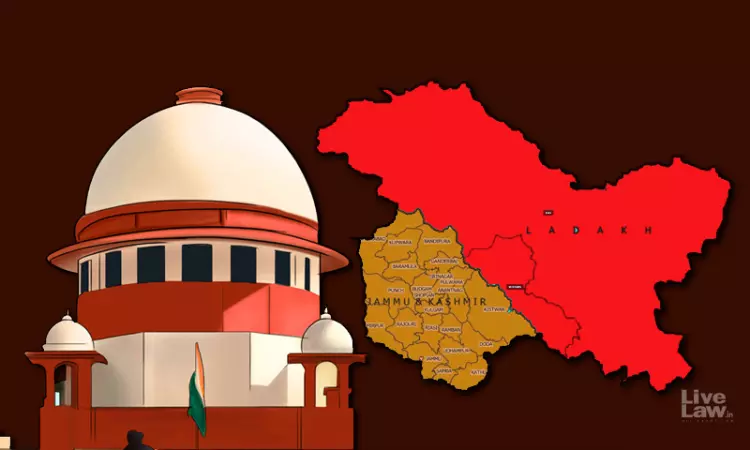Free Courses Sale ends Soon, Get It Now


Free Courses Sale ends Soon, Get It Now



Copyright infringement not intended
Picture Courtesy: www.livelaw.in
Context: The Proclamation of 1949 by Yuvraj Karan Singh was a significant document that played a role in the Supreme Court's judgment upholding the abrogation of Article 370.
Key Highlights
Repeal of the Government of India Act 1935
Adoption of the Indian Constitution
Superseding and Abrogation of Inconsistent Constitutional Provisions
Full and Final Surrender of Sovereignty
Ambiguity Resolution
Acceptance of the Indian Constitution's Supremacy
Conclusion
Must Read Articles:
Status of Jammu and Kashmir: https://www.iasgyan.in/daily-current-affairs/status-of-jammu-and-kashmir#:~:text=The%20state%20of%20Jammu%20and,property%20in%20Jammu%20and%20Kashmir.
Jammu and Kashmir Special Status: https://www.iasgyan.in/daily-current-affairs/jammu-and-kashmir-special-status
|
PRACTICE QUESTION Q. What role did The Proclamation of 1949 play in relation to Article 370? A) It strengthened Article 370 B) It had no impact on Article 370 C) It opposed the abrogation of Article 370 D) It supported the abrogation of Article 370 Answer: D Explanation: The Proclamation of 1949, issued by Yuvraj Karan Singh, played a supportive role in the abrogation of Article 370, aligning Jammu and Kashmir with the rest of India. |
© 2024 iasgyan. All right reserved